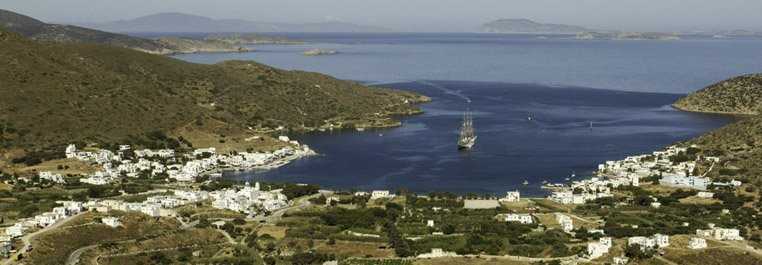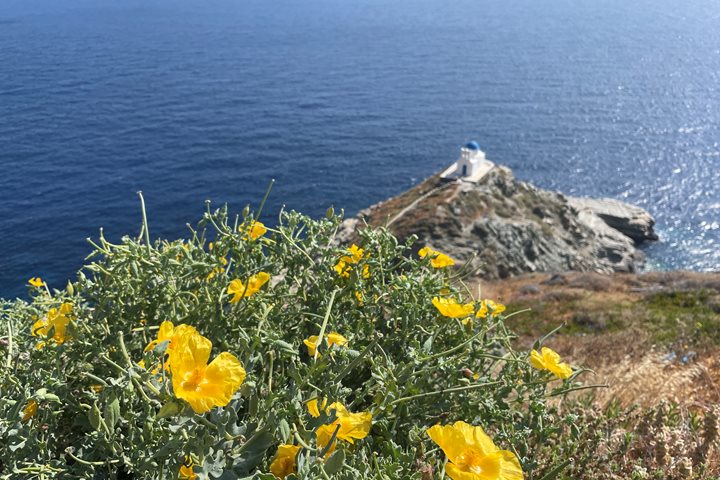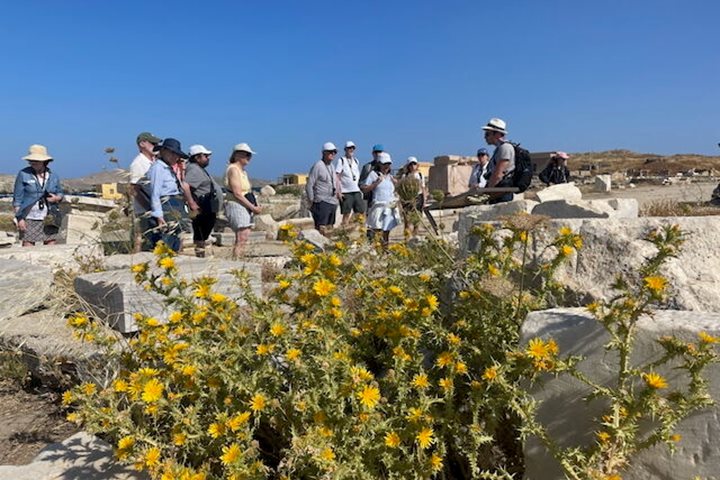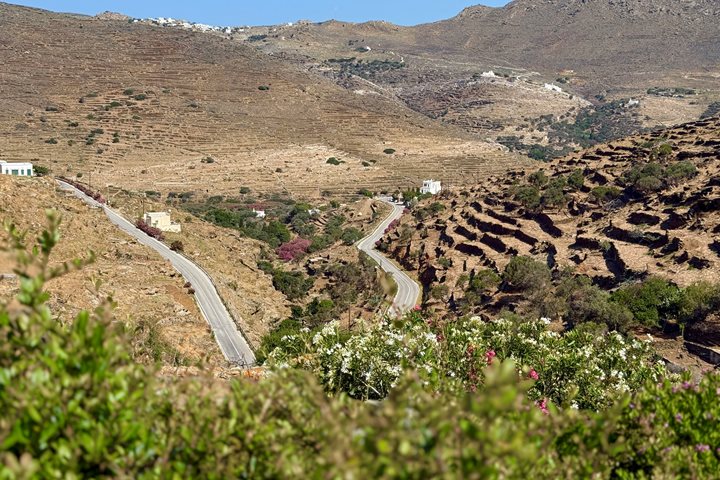The most remote island of the Cyclades. The “wildest” island in the Aegean. The most beautiful “chora” in the Cycladic Islands. The location of the most important Archaic period artifacts and sculpture that is housed in the National Archaeological Museum. The southeast bastion of Byzantine Christianity in the ages of Turk and Islam proliferation. Filming site of Luc Besson’s classic 1988 escapist film “The Big Blue.” The most protected natural harbor in the Aegean. The most dramatic island monastery. The best rakomelo in Greece…
The expedition staff seemed to be quite excited about our visit to Amorgos, as the anticipation built through the evening prior. We had an option to hike up more than 300 steps on a European Union sanctioned donkey trail to the spectacular monastery of Hozoviotissa, built in the 11th century when an icon from the monastery of the same name in Palestine was found in the area at the same time the Turks were threatening the Byzantine existence in the Mediterranean. Half of us rose early to drive across the limestone backbone of the island to make the hike up to the 7-story church that seemed to be pasted onto the cliffside with a width of only 5 meters. The rest of us were equally as impressed just watching from the base of the trail, with the precipitous cliffs falling into the big blue below. It was easy to see that if the monastery were not dramatically whitewashed as it is today, it would have been impossible to see, much less invade, if you were a medieval Turk marauder. It suddenly became easy to understand why Amorgos was the richest and most important Byzantine outpost in the Cyclades.
After the visit to the monastery, we all explored the absolutely endearing “chora,” or main village of the island. This was the real thing, with a tiny polygonal “square” framed by five tiny churches, just atop another irregular “plaza” that only showed three church entrances. Photographers disappeared up stairways, through arches and under the bougainvillea, while others ducked into the few arts and crafts shops to see just how creative one can get when living year-round on such a remote island. Nobody left the island without trying the renowned “rakomelo,” which is a distilled grape raki tinted with melo, or honey and a lively mix of clove and cinnamon.
It was almost too much to absorb, so we spent the afternoon reclining in deck chairs under the majesty of square sails, as Captain Pushkarev coursed the ship south to take advantage of the westerly breeze. Though it wasn’t easy, most of us managed to raise ourselves for baker Andreas’s custom made crepes before finding our late afternoon vantage points for the dousing of the sails. The late afternoon sunlight cast a final glow on the persevering cliffs of Amorgos, the wildest of the Cycladic Islands…









